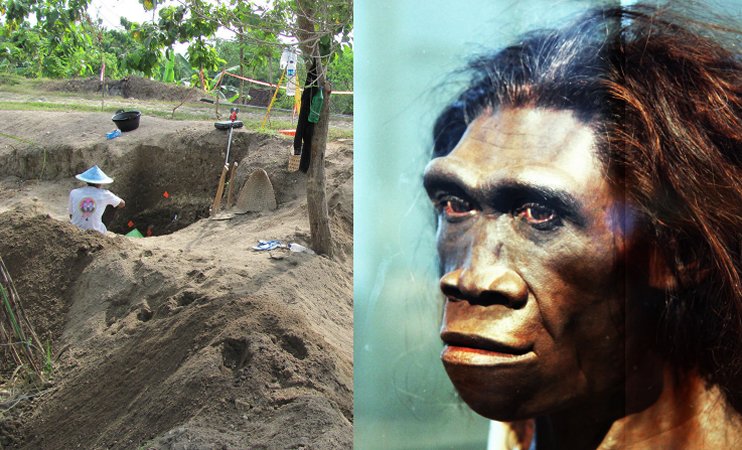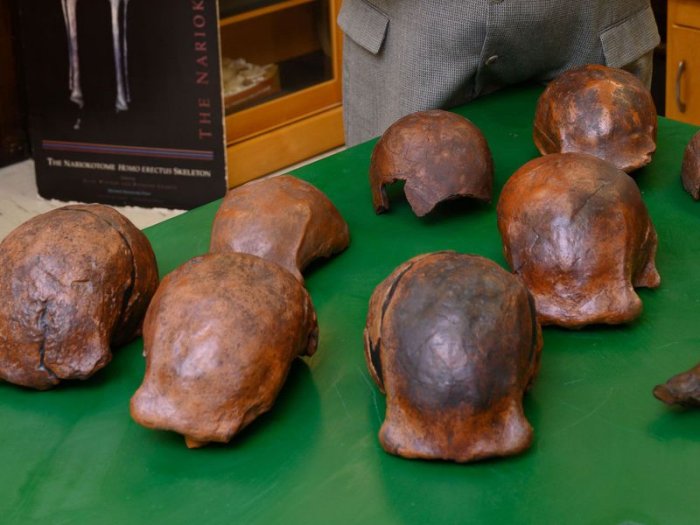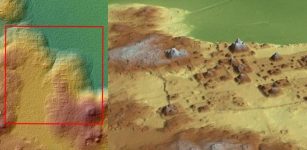Last Homo Erectus Lived 117,000 Years Ago At Ngandong
Conny Waters – MessageToEagle.com – About 400,000 years ago, Homo erectus essentially vanished and researchers have tried to determine when and where one of modern humans’ direct ancestors was last present.
A recent study reveals the last Homo erectus lived at Ngandong, the Indonesian island of Java between 108,000 and 117,000 years ago.

Left: Excavations underway at Ngandong. Credit: Copyright Russell L. Ciochon University of Iowa. Right: Forensic reconstruction of an adult female Homo erectus. Credit: Public Domain, CC BY-SA 2.0
Scientists from the University of Iowa; Macquarie University; and the Institute of Technology Bandung, Indonesia have time-stamped the site by dating animal fossils from the same bonebed where 12 Homo erectus skull caps and two tibia had been found.
Then researchers, dated the surrounding landforms, mostly terraces below and above Ngandong to establish an accurate record for the primeval humans’ possible last stand on Earth.
“This site is the last known appearance of Homo erectus found anywhere in the world,” Russell Ciochon, Professor in the Department of Anthropology at Iowa and co-corresponding author on the study, said.

Several Homo erectus skulls were recently identified as the youngest known fossils of the species, some 108,000 to 117,000 years old. These fossil replicas are housed at the University of Iowa. Credit: Tim Schoon / University of Iowa
“We can’t say we dated the extinction, but we dated the last occurrence of it. We have no evidence Homo erectus lived later than that anywhere else.”
See also:
Homo Erectus Was Too Lazy And Went Extinct
Unknown 500,000-Year-Old Migration Route Of Homo Erectus From Africa – Discovered
Mysterious Ancient Human ‘Ghost’ Species Discovered With Help Of Saliva
Using notes from the Dutch surveyors’ excavation in the 1930s, the team found the original Homo erectus bone bed at Ngandong and re-exposed it, collecting and dating 867 animal fossil fragments.
Previous studies shows Homo erectus hopscotched its way across the Indonesian archipelago and arrived on the island of Java about 1.6 million years ago.
The timing was good because the area around Ngandong was mostly grassland, the same environment that cradled the species in Africa.
Plants and animals were abundant. While the species continued to venture to other islands, Java, it appears, likely remained home—or least a way station—to some bands of the species.
However, around 130,000 years ago, the environment at Ngandong changed, and so did Homo erectus‘s fortunes.
“There was a change in climate,” Professor Ciochon explains.
“We know the fauna changed from open country, grassland, to a tropical rainforest (extending southward from today’s Malaysia).
Those were not the plants and animals that Homo erectus was used to, and the species just could not adapt.”
Written by Conny Waters – MessageToEagle.com – AncientPages.com Staff Writer










